No other sales methodology or framework is as prevalent as MEDDIC when it comes to being used by the world’s most elite revenue teams… But it’s not just how MEDDIC works at the deal level that makes it the most commonly deployed part of top CRO’s playbooks. But also how MEDDIC works across the entire revenue organization to bring all revenue-focused teams together to use MEDDIC as a common language.
In this article, I am going to break down the top 5 reasons why having MEDDIC as a common language will help you:
-
Bring revenue teams together, demolishing any communicative silos
-
Sell more deals
-
Increase your ASP
-
and best of all… cut your average sales cycle length!
Using MEDDIC as a common language means that your revenue teams reference the following key components in the same way:
-
The stakeholders – Who are they? What do they care about? What is their role?
-
The challenges or goals that the customer is facing, how you propose to solve them, and the measurable impact of solving them
-
The customer’s buying process. Right from how they make the decision to even enter into an evaluation process through to the processes they have to go through to move forward with your products or services, through to the subsequent upsells and renewals.
Let’s get into the top five reasons for having a common language!
MEDDIC as a Common Language Reason 1 – Hiring
A friend of mine who is a top sales leader said she was struggling to find talent to fill her open headcount. She had candidates galore, but they weren’t cutting it. She switched up her strategy to ask her recruiters to look for MEDDIC experienced sellers, and she filled the positions in weeks.
It is not just about finding talent, but, increasing efficiency in the hiring process. You can tell in minutes of talking to a salesperson whether they truly understand and embrace MEDDIC. This means that hiring managers can save hours and hours of time by allowing their recruiters to qualify candidates MEDDIC level before putting them into the hiring process.
Another major hiring benefit is that MEDDIC companies tend to have a high standard of discipline for areas of importance such as Pipeline Generation, Forecast accuracy, and collaboration across departments such as Sales Engineering and Customer Success. So, if you hire talent from a MEDDIC company, you can feel confident the candidates are likely to be strong in other crucial selling disciplines.
MEDDIC as a Common Language Reason 2 – Onboarding
Imagine every time your company hired a new developer they had to learn a new ‘coding language’ or worse still everyone used their own interpretation of a coding language… It would be mayhem, right? Well, that’s what happens in revenue teams if you don’t have a common language. People start, and as well as learning the product, the space, the personas and all of the other stuff that goes on with joining a new company they also have to learn the ‘lingo’ that your company uses to describe engagements with customers. MAY-HEM!!!!
That is the nightmare state. The utopia state is that the new hire uses MEDDIC and so do you. Rapidly accelerating their understanding of the way you engage with your customers. They are going to know the personas of your typical customers and the typical buying criteria they care about when buying from you.
And suppose your new hire doesn’t know MEDDIC. In that case, you can swiftly enable them to know it by putting them through your internal onboarding program for MEDDIC or if you don’t have your own. The MEDDPICC Masterclass covers MEDDPICC in-depth and will enable your sellers to talk your language in a rapid and elite manner. Learn more about the MEDDPICC Masterclass here.
MEDDIC as a Common Language Reason 3 – Your GTM Team Needs It!
Officially or unofficially, your GTM team should stretch from your exec team to product to marketing and, of course, the revenue organization.
Your GTM team should be considering two key components in EVERY decision.
1) The profile of the customer who buys from you. Who are they? What do they care about? How do you help solve their goals and challenges?
Everything your GTM does, from the priority of the roadmap through to the way you articulate your messaging, should be focused on your customer profiles.
2) The needs of your customers. What are the criteria on which they base their decisions, and how does your GTM function align with it?
Not just from a technical perspective… But taking into account the commercial and relationship elements too. For example:
-
Do your commercial terms align with your customers?
-
Does your pricing model support the business cases of your customers?
-
Do you have local support where your customers need it?
-
Do your relationships with partners align with who your customers need them to?
-
And much more.
There needs to be a feedback loop going across the entire GTM team. Without it, the cohesion of what is important to your customers is lost, and without a common language like MEDDIC, things will be lost in translation.
MEDDIC as a Common Language Reason 4 – Data
Does your company say that they are data-driven?… Who doesn’t?! But how can you be data-driven in revenue if your data points are variable?
Because if you don’t have a common language, then your data points will be variable. And ask any data scientist about the value of varying data points…!
Let me expand on this point by asking you some questions:
-
What is your success rate if you don’t have a Champion?
-
How much longer do your sales cycles take to close if you don’t have engagement with the Economic Buyer?
-
What is the most impactful value or Metric you uncover in the sales process?
-
If there is a shortfall in your product, what % of times does not having it cause you to lose? OR if there is a unique strength you have, how often is it helping you to win? Are either as vital as you think they are?
-
How long do your average contracting processes take?
-
What % of customers are benefitting from the value you promised in the sales cycle?
-
What % of churn happens when you have a true Champion?
I could go on… The point I am making here is that you cannot answer these questions in the absence of a common language. For example, if I think a Champion is one persona and my peer thinks it is another, you will not be able to extract any useful information from the data. They directly contradict themselves, and you’ll be in the dark about the true impact of these elements.
Another aspect of Data is, of course, forecasting. One of the most complex parts of a sales leader’s job is to cut through all of the noise in their rep’s forecast to find accuracy. MEDDIC cuts through the optimists, pessimists, and nonsense in the forecast to cut to the facts.
As a sales leader using MEDDIC, I never once forecasted outside of a 10% margin of error in my forecasts. They weren’t always good news, in fact, more often than not, they pointed to a shortfall, but it made it clear to everyone about the task we had ahead of ourselves to get onside. Most importantly, there were rarely any surprises.
MEDDIC as a Common Language Reason 5 – Excellence Across the Entire Customer Lifecycle
We already talked about the GTM team, but let’s zoom in a little on the revenue team.
Let’s look at an outbound cycle – The SDR profiles her prospects based on finding prospects who share the same goals and challenges as companies who get the most value from her company’s solution. She can reach out to those prospects, highlighting the value her existing customers get from her solution and why that is relevant to the prospect. She will know who will likely be a prospective Champion and can approach that person with clear metrics-based information.
Once the meeting is set, the SDR can brief the Account Executive on the potential Pain, Metrics, and Champion. The AE can start preparing for the first meeting by expanding on the Metrics from other customers.
If you want to know how you can use Metrics from existing customers to nail your first meeting, there is a free extract from the lesson that covers this in the MEDDPICC Masterclass linked below.
Ahead of the meeting, the AE can start to think about the stakeholders. Who is likely to be the Champions, Detractors, EB, TB. What will be their potential Decision Criteria, and how can we influence it toward their strengths? If they have a sales engineer or any other colleagues joining the meeting, they can also brief them on the same components.
Likewise, Execs can be briefed on every part of the deal cohesively and efficiently.
And for me, the best benefit of all comes for the post-sales team, particularly the Customer Success team.
I’ve worked in organizations that used MEDDIC across the entire revenue organization and organizations that only used it in the sales team. One of the most compelling examples of why it is best to broaden MEDDIC across your entire revenue organization can be seen in the importance of having a clear definition between pre and post-sales of a Champion. I have noticed that Customer Success teams tend to have a very different definition of what a Champion is. To them, it’s their main point of contact; they rarely profile them by power and influence, which is by far the most critical qualifying factor of a Champion. This means that when the going gets tough as it often does, the Customer Success Manager’s definition of a Champion is ineffective at acting as a true Champion, and trouble persists that often ends up in churn.
In this example, if salespeople and Customer Success Managers have the same profile of Champion, then when the salesperson closes the deal and does handover to the CSM, they can work at continuing the relationship with the true Champion regardless if the main point of contact shifts.
Having a common language for the Champion is just one of the benefits of using MEDDIC as a common language across Sales and Customer Success. But it’s much bigger than that. Customer Success is going to get the world’s greatest handover via MEDDIC:
-
They will know precisely what KPIs the customer will be using to measure the solution’s value – The Metrics.
-
They will know exactly who is the overall authority and the person they need to stay engaged with – The Economic Buyer.
-
They are going to know what the criteria were in which the customer made their decision. Not just technical, but economical and the relationship factors that made the difference and what the expectations with those are – The Decision Criteria.
-
They are going to know the process of how the customer makes decisions. Perfect for upsells and renewals – The Decision Process and Paper Process.
-
They are going to know what pain it is that they are solving – Implicated Pain.
-
As I mentioned earlier, they will know who the Champion is and have no excuse not to stay engaged with that person – The Champion.
-
And last but not least they are going to know who the competition in the mix was. Who is likely to pop back up at renewal time, or if the Competition is not a rival solution but a competing project or that the company was considering self-building, they know who to look out for as a potential detractor inside the customer’s organization.
Now you may be wondering whether these benefits transfer across to other sales frameworks. In theory, the answer is “yes” if those frameworks focus on the who, the what, and the how of how customers buy, then theoretically, they can. However, unfortunately, there is always one factor that flaws them – they are not common languages. For the benefits of a common language to work, it has to be ‘common.’ Right now, there are tens, maybe even hundreds of thousands of revenue professionals who practice MEDDIC. If you search on any job site, you will find hundreds of revenue jobs advertising MEDDIC as a requirement. If you do the same search for other frameworks, you are lucky to find a handful of jobs.
A common language needs to be common for it to work.
So there you have it… My top 5 reasons why you need a common language like MEDDIC in your revenue team.
Just imagine what a utopia it would be if every person in your revenue team talked the same language!
Thank you. And until next time, May your Champions be Strong 💪.



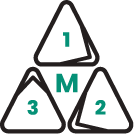

.png)





.png)

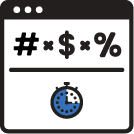



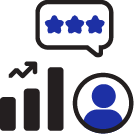



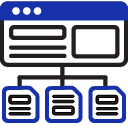

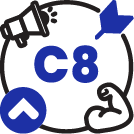






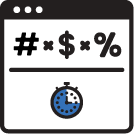





%201.png)








.png)

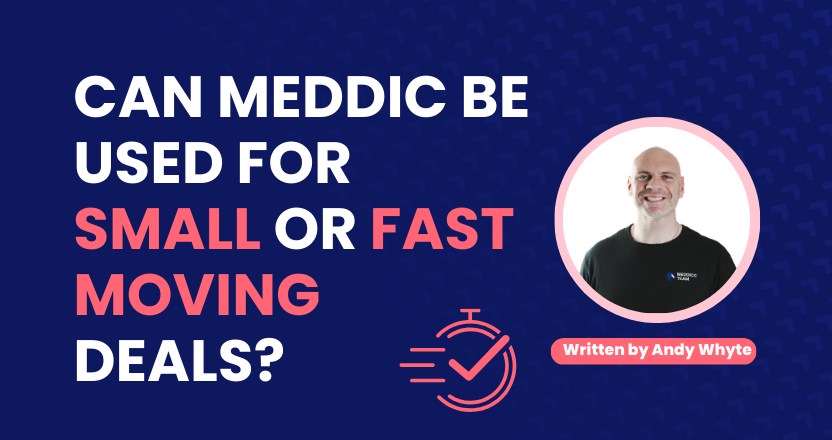
.png)
-1.png)